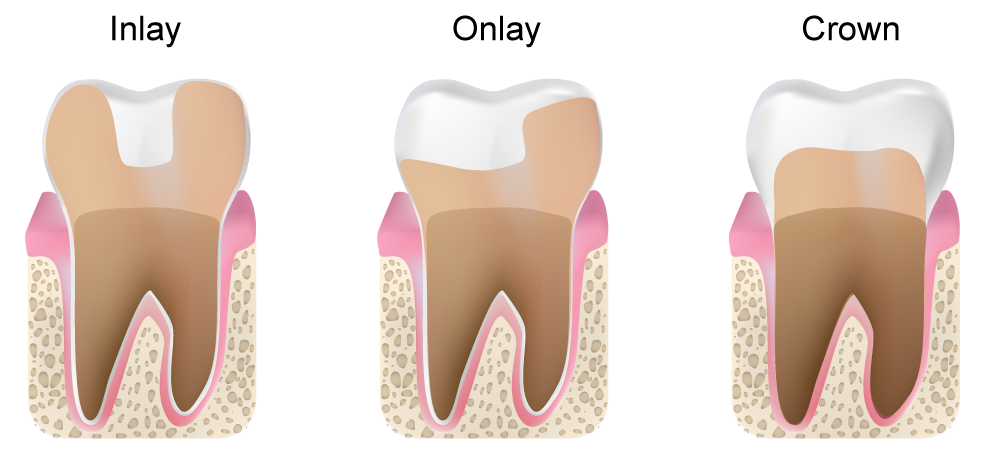Restore Damaged or Decayed Teeth with Inlays and Onlays
Inlays and onlays can repair mild to moderate damage to the rear molars, as well as address dental cracks and fractures. At our practice in Sterling, VA, Dr. E. Richard Hughes can expertly place these restorations, helping to strengthen your teeth and restore functionality to your smile. Inlays and onlays are less extensive as compared to dental crowns, so we can preserve more of your healthy tooth structure. We are committed to helping our patients achieve optimal oral health, which is why we provide the highest quality care during every restorative treatment.
Inlays and onlays are less extensive as compared to dental crowns, so we can preserve more of your healthy tooth structure.
What are Inlays and Onlays?
Inlays and onlays are custom dental restorations that can address mild to moderate dental decay or damage to back molars. This option is most commonly used when dental fillings are insufficient, but a dental crown is not needed. Dr. Hughes may also use these custom restorations to replace old metal fillings, which are often larger than modern composite alternatives.

What is the Difference Between These Restorations?
Inlays are used to repair molars that have suffered decay or damage within the cusps, or protruded chewing surfaces. Onlays are used when the cusps themselves are decayed or damaged. Both restorations are custom-made in a dental laboratory from lifelike materials, such as porcelain, to create the most natural appearance.
Fabrication
As with dental crowns, the treatment process for inlays and onlays usually takes two office visits. During your first visit, Dr. Hughes can remove the portions of decay or damage. He can then take impressions of your tooth, which will be sent to a dental laboratory and used to fabricate your custom restorations. We may also place a temporary restoration at this time to protect your tooth between visits.
At the lab, a skilled dental technician will carefully design your custom restoration using durable, high quality materials. Most patients prefer porcelain or resin, which can be matched to your natural tooth color for a seamless appearance. This process takes about two weeks to complete.
Placement
When we receive your restoration, you can return to our office for placement. After removing the temporary inlay or onlay, Dr. Hughes can cement your permanent restoration in place using a strong dental bonding agent. After ensuring that your restoration fits comfortably in your bite, he can polish your teeth to enhance your smile.
What are the Benefits?
Treating damage or decay with an inlay or onlay offers several benefits, including improved oral health and restored dental function. In addition, you should notice a significant reduction in pain or sensitivity associated with any previous decay. This option also enables Dr. Hughes to preserve more healthy tissue than is possible during a dental crown procedure, helping to preserve the structural integrity of your smile.
Learn More about Inlays and Onlays
If you are experiencing any sensitivity or pain in one or more teeth, you may have a cavity. Dr. Hughes can examine your smile and determine the best course of action for your dental needs. To find out if any inlay or onlay is right for you, contact our office online or call (703) 444-1152 and schedule your appointment.

